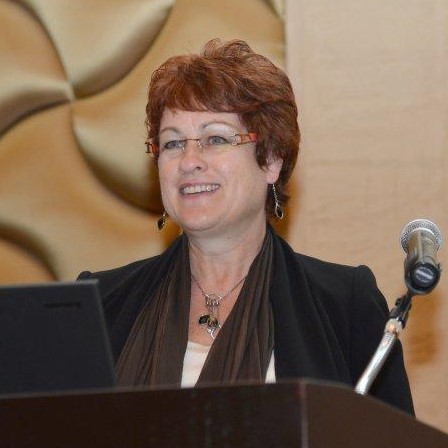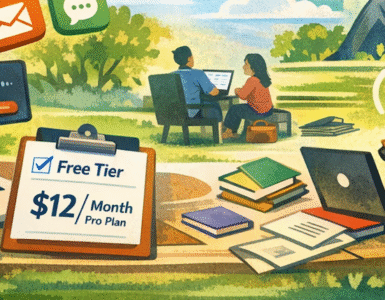by Patricia Quinn, Digital Practice Adviser, University of Leeds, UK.
How can we modernise and improve assessment and make it more authentic in an increasingly online world of higher education? Students are being asked to complete multiple assessments in their programmes of study, the traditional formats and number of which have not changed for many years, as mentioned by Nerantzi in her article: “Rethinking volume, variety and value of assessment in the era of GenAI”. Curriculum Redefined approaches are bringing about change across all programme areas including assessment although this will take many years to cascade down through many of the larger institutions and many will require impact studies before years of proven practices change. This is an institution wide project to transform student education. Current assessment practice is conservative, and progress and change happens slowly.
Encouraging creativity
Using an online portfolio allows students to collate and upload evidence of achievement; reflect on those achievements as they go in a meaningful way; use a variety of digital and multimedia formats to provide both their reflections and their evidence to meet assessment criteria and retain all these rich assets throughout their learning journeys into employment or further learning.
A further benefit of an online portfolio with the functionality to receive multimedia formats allows the students to be more creative in their submissions and assessments, benefiting from the rich variety of software and tools available to them at their institutions to create a wide range of formats such as podcasts, videos, images, online storyboards, blogs, digital stories etc, all of which can either be uploaded to their portfolio or linked to via URL. This also means that the students are completely in control of their assets and the type of evidence they provide, creating unique and diverse submissions from each learner, hence a more enjoyable marking experience for the assessors.
Inclusivity
Not only does allowing students to provide their submissions in this way make for a more inclusive experience for students who may have more diverse learning needs or come from a range of ethnic backgrounds, but it makes a more effective assessment process for all students, who should be able to express themselves in a range of ways, using different formats. For students with learning disabilities, however, it is even more important to allow this range of creative expression. For example, students with visual impairment can use audio or podcasts for their assessment outcomes and students with audio impairment can use visual submissions. Likewise, assessors can provide their assessment and feedback inclusively using audio or video formats.
Reducing the workload on both students and assessors
Multiple assessments are often text based in format with a defined word count and a final deadline which is set by an awarding body and in line with strict assessment criteria. More and more programmes are finding ways to work within these guidelines using a looser and more flexible form of formative and summative assessment. Different and more flexible submission formats will allow more inclusivity for students. Reducing word count and removing deadlines are just two of the ways in which students can be freed from the many pressures placed upon them in the higher education assessment environment. Another important improvement would be to reduce the total number of assessments, always working within the agreed assessment criteria. Using a portfolio to combine assessments would be a useful way of meeting that target whilst allowing the students to focus on one assessment encompassing different tasks and submission method.
It is time that we holistically considered the ways in which we can diversify the format in which students provide their assessments to make them not only more inclusive but a more enjoyable experience both for the learners and the assessors marking them. How can we do this?
Encouraging reflection
Using a portfolio to submit an assessment task allows the student to provide reflection alongside the assessment allowing a richer ongoing experience and insight into the learner development for the assessor. Rather than assessing the final output, the assessor can read about the journey the student has taken to reach the final outcome, their ongoing development and how they have reached their goals, what skills they have acquired along the way and what opportunities they have taken advantage of for further learning, providing a much richer picture surrounding the assessment task which is being assessed. Students, of course, may not know how to reflect at the outset and will need guidance and instruction on how to reflect effectively with real contextual examples. The process to arrive at the assessment outcome is important but the journey to get there for the student is more so. By the end of the assessment, students should realise that reflecting is something we do every day as part of our normal lives, and we are giving them the skills to recognise this.
Using AI – its role and paraphrasing by students
The role of AI and its use in portfolio development is an interesting one and we are led by the University guidelines on the use of AI for teaching, learning and assessment. Students are encouraged to use it for research and drafts but then paraphrasing to make the work their own and unique, ensuring proper referencing where appropriate. Colleagues at the university have produced an excellent publication on the creative use of AI for feedback “101 creative ideas to use AI in education, a crowdsourced collection”. This includes the use of an AI generated feedback poem provided as formative feedback in an assessment task, which the students found both unique, enjoyable and rewarding.
What’s next – grading portfolios for assessment
The latest thinking on using portfolios for assessment is to recognise the achievements and assets curated by the student and reward them with not just a pass/fail but a graded acknowledgement of what has been achieved on their journey towards the learning outcome or assessment criteria. Some great work has already been done at the University of Edinburgh using PebblePad by Dr Alison Cullinane who discusses “Embedding a reflective portfolio for student development in science courses: Challenges, suggestions, and solutions and moving to a graded approach for assessing a portfolio.” As described by Renwick: “When an assessment result is more than a score or level, we start to see our students as capable people with a lot of potential.” Opponents of grading may find this uncomfortable and there is a growing view that formative feedback on its own can provide a satisfying outcome for a student, allowing them to grow in their learning journey, although some will argue that we need to be able to identify a pass or fail somehow! Perhaps because the portfolio is part of a larger piece of overall assessment. Perhaps we should all reflect on this

Author
Patricia Quinn, Digital Practice Adviser, University of Leeds, UK














